The growing farm-to-table movement in Syracuse
The gradually expanding farm-to-table community in Syracuse
Farmers, chefs and educators are creating a community that benefits fresh food for restaurants, markets, bars and schools.
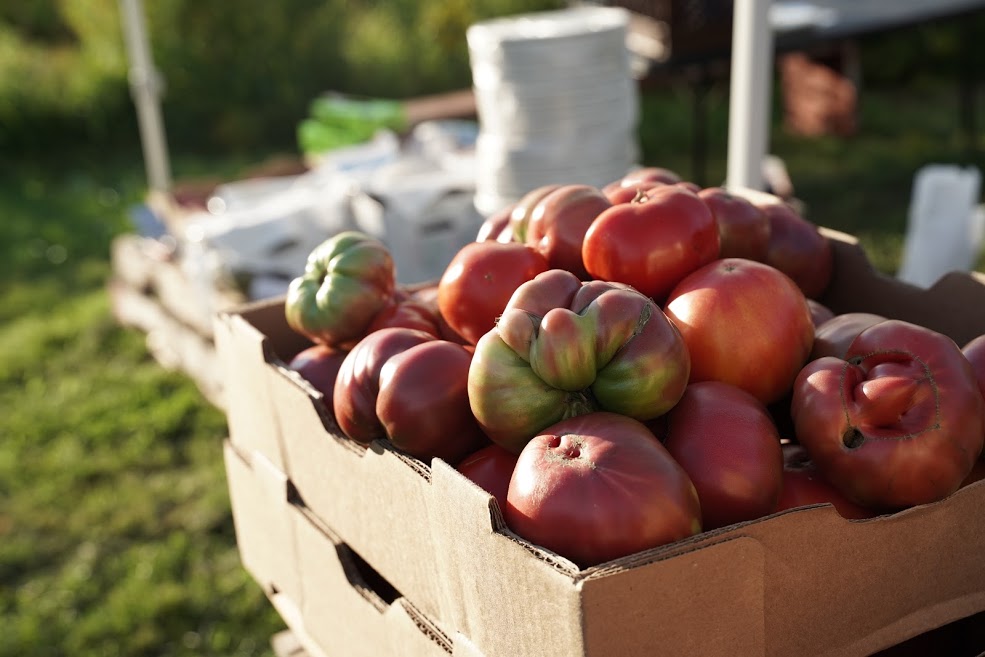
Every morning in Onondaga County, farmers pick their crops, harvest their grains and milk their cows before sending their products to the next stop in the food supply chain.
It’s there that a local chef writes a new menu using fresh ingredients from the bounty. Or, a farmer’s market offers a stand to deliver fresh produce to customers. Or, it’s a distiller who determines how to use his local shipment to ferment a new batch of spirits.
These scenes are part of a larger narrative unfolding in Syracuse, where farm-to-table dining and markets are becoming a way of life for some while benefitting the producers, local economy and consumers.
From Farm …
Alexander Warshal is a Food System Project Coordinator at the Syracuse Onondaga Food Systems Alliance (SOFSA) and a local farmer of potatoes and other produce. Warshal said the growing interest in farm-to-table in the community, leading to more research and integration of local products into the supply chain.
Warshal sells to a variety of “institutions” in Onondaga County, including small grocery stores and co-ops, other farms and restaurants. Among his customers are high-end restaurants that buy his fingerling potatoes.
“When you find the right restaurant that wants to buy local, you’ll find a restaurant owner that’s really passionate about local, or you’ll find a chef really focused on quality,” Warshal said.
This combination spurs restaurants to lean into the local purchasing of products as much as they can, using fresh ingredients to contribute to the overall experience for diners, he said.
“Why does my product belong on your plate?” is the question Warshal aims to answer for area chefs and owners interested in his produce. The nutritional value, geography and environmental impact, and product quality all factor into what Warshal pitches.
“Nothing makes you smile more,” Warshal said, than hearing the local diners remark that they had his potatoes served at a restaurant.
… To …
One of the biggest hurdles for small local farms is finding places to sell your items.
Building relationships is key and that’s where Mark Pawliw has stepped in to help Warshal and other farmers connect with the people they wish to sell to.
“It’s starting, there’s a movement towards buying local,” said Pawliw, founder of Farm to Fork 101 and Plum and Mule Community Market. “There are so many people who are focusing on connecting the farms and bringing food access [to the community].”

Pawliw, who graduated from Syracuse University’s geography program in 2013, started Farm to Fork in 2015 after many years of working in the restaurant industry. His goal was to teach people about local food and how it is used in the Syracuse area, while also acting as a marketing tool for local restaurants and farms.
The Plum and Mule Market, which Pawliw started during the pandemic, has a complimentary goal to “make it easier to source local” by providing access to these products to households, schools and restaurants.
Plum and Mule Market is in the process of moving into their second phase of operations. The first phase consisted of the creation of their online store, offering hundreds of products connecting local vendors and producers to customers through pick-up and delivery.
The market’s second phase consists of building their brick-and-mortar storefront for community members to shop for local products in person and create a farm-to-table experience at home. They plan to open at the end of the year.
“We are 100% local, so we don’t do anything outside of New York State,” Pawliw said.
… Tables
The Syracuse area has yet to see a boom when it comes to farm-to-table restaurants, however, several chefs are making efforts to incorporate locally sourced food.
Apizza Regionale in downtown Syracuse prioritizes using producers from across New York state. Serving fresh pizzas, as well as rotating seasonal salads, antipasti, and more, Apizza stresses a commitment to sourcing ingredients “from the finest regional growers and producers in New York State.” The restaurant’s wall has a custom chalkboard map of the state, pointing to more than 15 purveyors they work with.
Elderberry Pond in Auburn was accredited by Pawliw as one of the only “true” farm-to-table restaurants around. Located about 30 minutes west of SU campus, Elderberry Pond is a 36-acre organic farm with a fine dining restaurant on the property.
The farm houses “orchards, vineyards, and seasonal vegetable plantings,” as well as meats from their pasture-raised chickens and cows.
Also west of Syracuse, Potters Farm to Fork opened in a former diner in Port Byron in October 2021 and features locally sourced cheese, beef and potatoes on its menu.
Eden is an “upscale-casual” restaurant located in downtown Syracuse’s Hanover Square, focused on “highlighting the best producers, farmers, brewers, distillers, and foragers” in New York. Its website touts seven farms and distributors Eden closely work with.
Eden’s cheese is made by 2 Kids in Cuyler, New York, a farm with goats and cows. The milk is from Buffalo, and eggs and produce come from other nearby farms.
Eden owner executive chef Rich Strub said he is in constant contact with about 25 farms, receiving batches of seasonal fruits and vegetables year-round. New York farms also provide meat, and when they can’t source everything easily from the state, they purchase sustainably. Strub said some of Eden’s seafood comes from Veta La Palma, a farming estate in Spain known to be one of the most sustainable fish farms in the world.
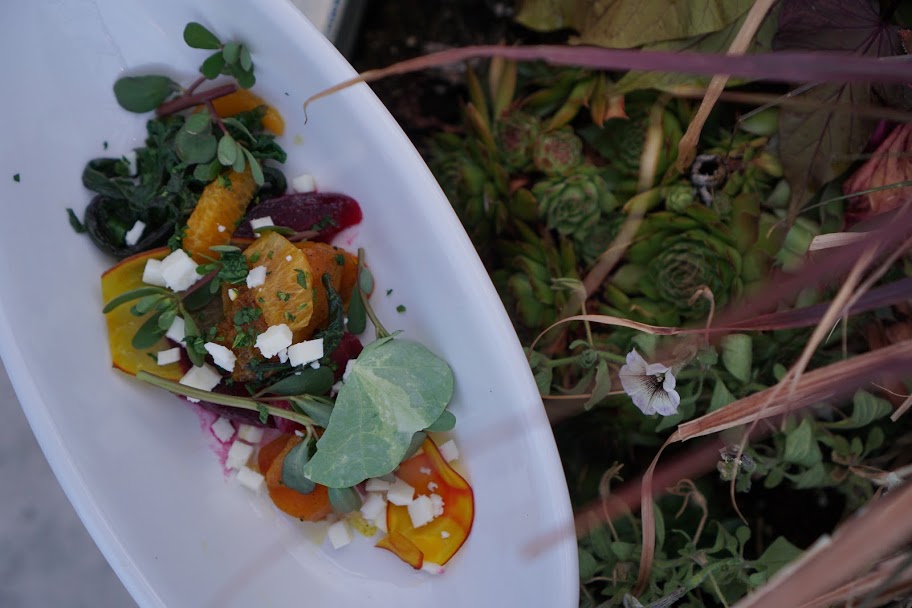
Strub oversees operations at the front and back of the house. He orders the restaurant’s inventory, writes the menus that can change daily based on ingredient availability and freshness, preps the kitchen during the day, and helps wherever it is needed at night.
Farm-to-table is “the ethos [Strub] has always followed,” working in restaurants since the age of 14, primarily in Vermont, where “any high-end restaurant is farm-to-table.” His years of experience in kitchens led him to want food to be his career.
Strub said he finds it valuable to source locally when possible because of the community it builds. It is so important to support local businesses in the area, and they will in turn support the restaurant.
Also, Strub said he believes that diners can “absolutely” taste a difference when ingredients are fresher and were just harvested the previous day. They are higher nutritional value because they are not oxidizing for long periods of time, he said.
To the bars …
Chris Uyehara is another chef who has found success, but in different realm of the farm-to-table industry.
Born and raised in Honolulu, Hawaii, with a master baker for a father, Uyehara said he was exposed to the culinary world as well as the importance of fresh ingredients at a very young age.
He worked for his family business in Hawaii, as well as hotels and resorts there, before moving to central New York, where started a small bakery and then helped design other bakeries in the area. He then moved on to become a private chef, and eventually a SU professor. He started the professional baking course at Syracuse, as well as courses in fine pastries, fusion cuisine and farm-to-fork.
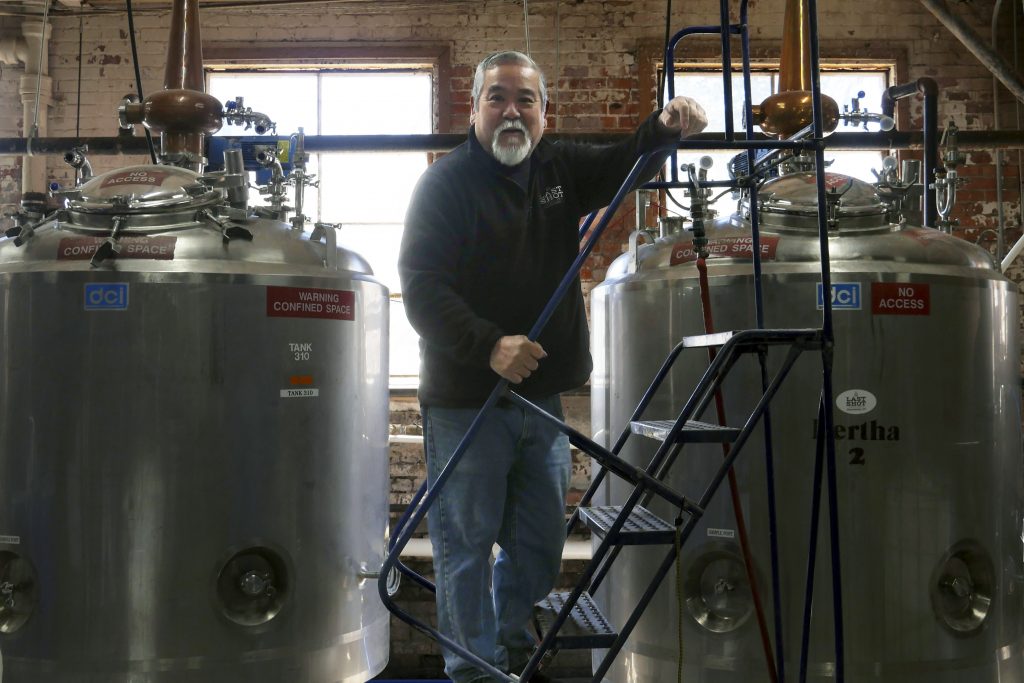
As retirement neared, Uyehara started Last Shot Distillery He set out to try distilling, after nearly a lifetime in the baking industry, because it produces little to no waste. This was a sustainable business he could grow. The distillery opened in 2015 in Skaneateles, and he currently crafts more than 10 unique spirits in-house, all with locally sourced ingredients.
Uyehara’s son-in-law is a farmer, so he was able to quickly establish a relationship there and utilize his dairy products, as well as experiment with grains. Uyehara relies heavily on seed farmers for grains because they watch them very closely, monitoring the quality. Uyehara does, too. He can communicate with the farmers and even notice if they change a batch.
“Regular farmers, the plant or vine might mold … and you won’t know until four years later when you drink it,” Uyehara said.
Uyehara spends the extra money and time to buy from a grain farmer.
“Dad always said quality should be your first ingredient,” he said.
Uyehara has a mutually beneficial relationship with these farms, too. He buys 1 ton of grains at a time, and after fermenting, the nutrients and proteins are still present. He can mash up the grain and give it back to the farmers for feed for their animals. They use no harsh chemicals and make sure to produce eco-friendly waste, so it can make its way to the animals they feed, or back into the stream close by.
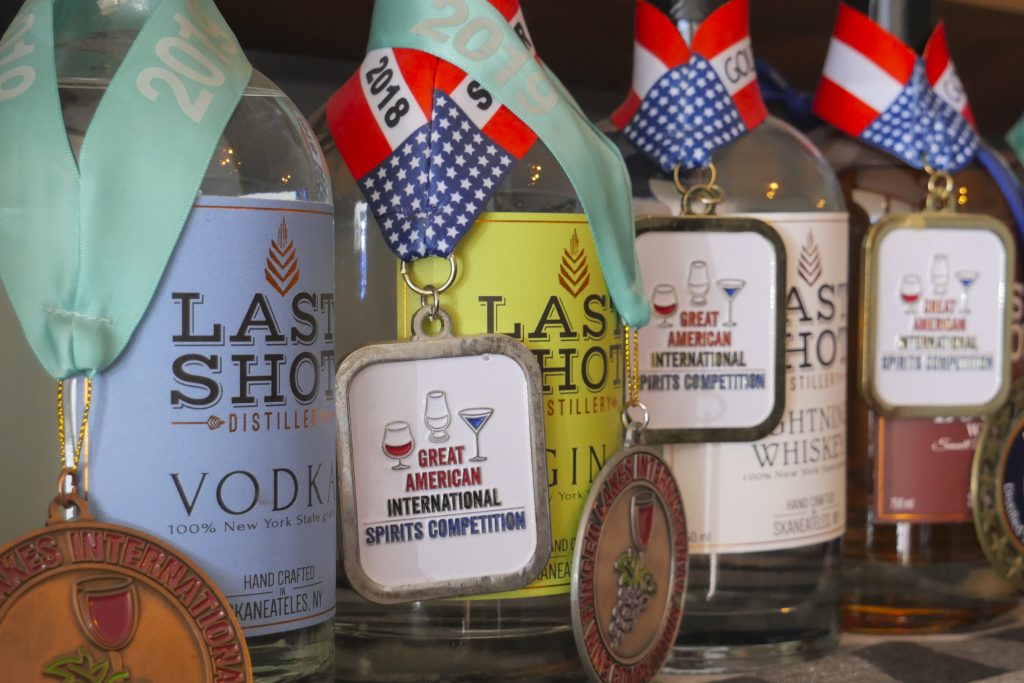
In starting Last Shot, Uyehara wanted to help other businesses too. From the wheat to the maple syrup to the bottle labels, he tries to get everything locally.
“It’s hard to do business in New York state,” he said. “It’s a lot of small businesses and small farms, and they struggle.”
Uyehara’s spirits have earned acclaim as winners of national and international beverage competitions, and he was featured on Master Distiller on the Discovery Channel. He currently sells his products in about 16 liquor stores across the state, as well as at the distillery in Skaneateles. The intention and hard work put into his spirits is without a doubt reflected in the product, and his customers and community value his commitment to quality and supporting local businesses.
… Even to schools
Not only is it important to put farm-to-table into action starting in households in restaurants, but educating people about the movement’s benefits is equally instrumental in allowing it to grow. Farm to Fork 101 focuses heavily on this among the community, but so do local organizations such as the Syracuse-Onondaga Food Systems Alliance (SOFSA).
Not only does Warshal grow his own food that he can sell, but he is also a project coordinator at SOFSA, with a specific focus on farm- to-school efforts.
This includes communicating with schools, finding out what their operations are like now in terms of food and farm-to-school, where their “potential barriers and pitfalls” may be, and also communicating with farmers to gauge their interest in selling and supplying to schools.
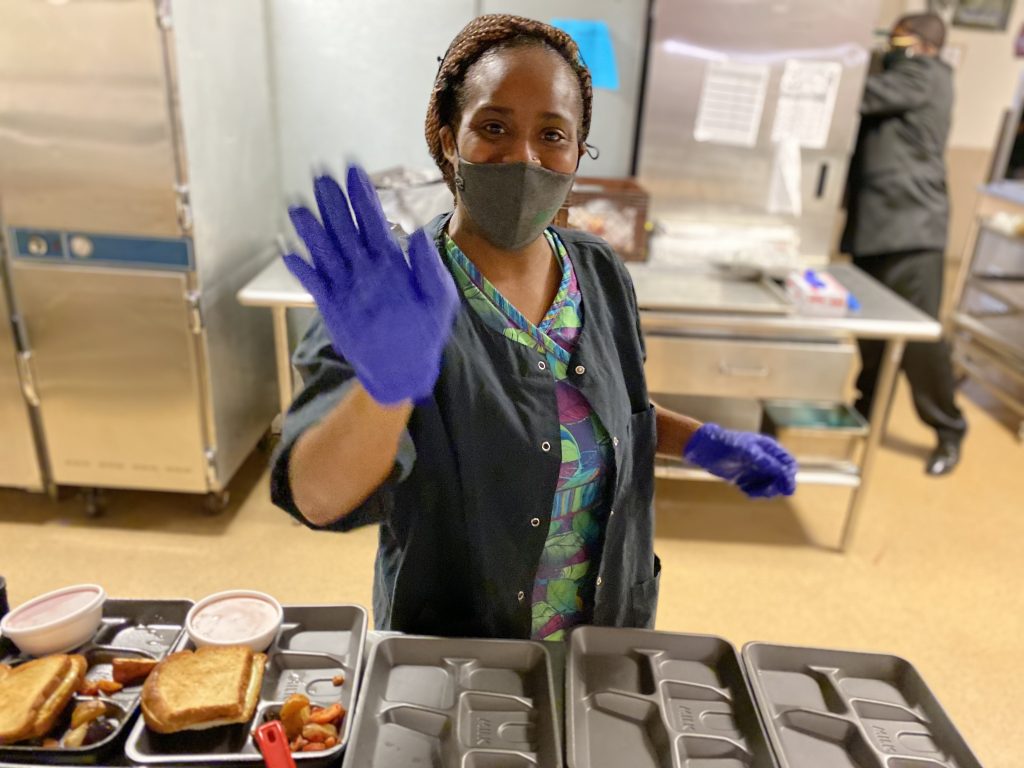
His team, in surveying different farmers and gauging their interest in selling products to schools, found that there is a “lack of processing and aggregation in the central New York area.”
The challenge isn’t with the agriculture and inventory in Onondaga county, as he mentions is nowhere near lacking, but actually getting the various products into schools that don’t have the resources and space to cook from scratch. Also, farms in central New York are on a much smaller scale than the average farm in the South or Midwest regions.
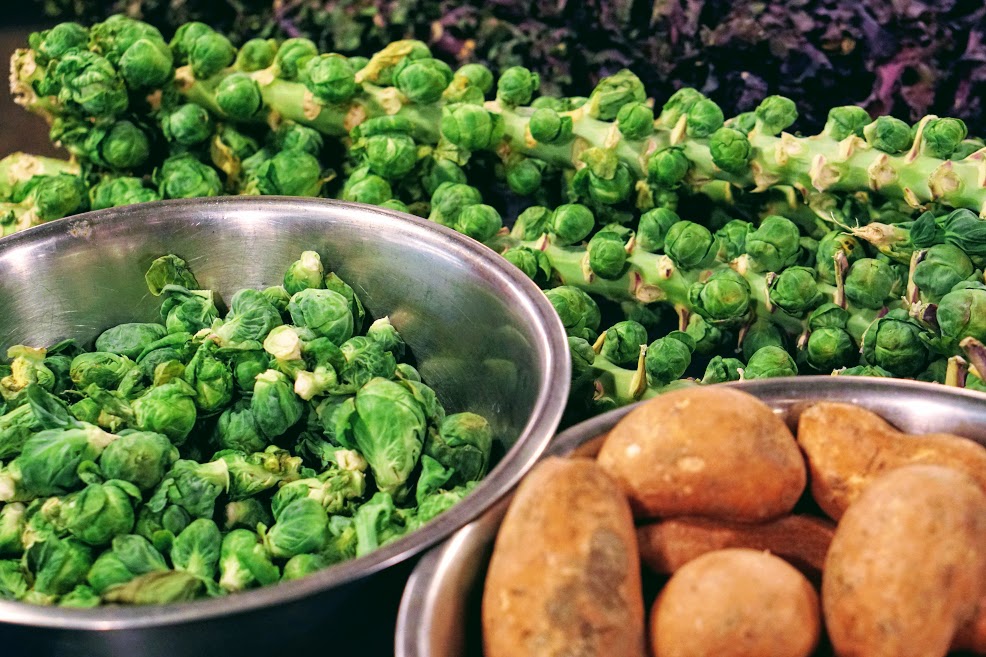
While some regions are more dominant in one industry sector, Warshal said Onondaga County is fruitful in dairy, livestock, fruits and vegetables and commodity crops, giving so much opportunity to institutions to source locally.
The beauty of Onondaga County, Warshal said, is that it is a “microcosm of agriculture in New York State.”
